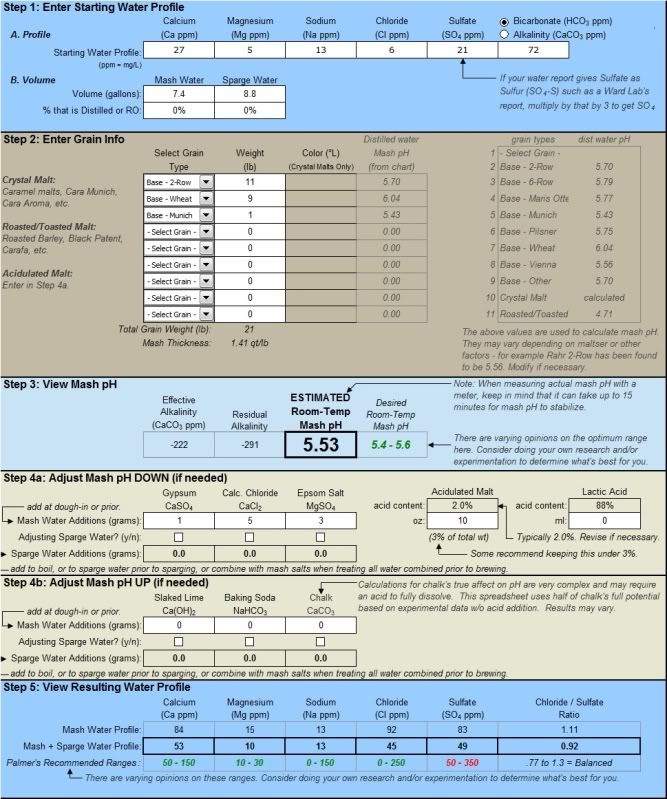chumpsteak
Well-Known Member
Hi all,
I've recently received my water report from Ward Labs, and while I thought my water looked pretty good I'm having trouble figuring what all to add. I've done a lot of reading on this forum but I'm still confused about alkalinity in general and why my RA goes negative when I try to figure additions for lighter colored beers.
Here's a EZ water spreadsheet I did for an American Wheat I want to brew this weekend. I did the additions to get the profile I want, but then when I add sauermalz to get the pH right the RA goes way negative.
If someone could take a look at this and provide some feedback I would really appreciate it.

I've recently received my water report from Ward Labs, and while I thought my water looked pretty good I'm having trouble figuring what all to add. I've done a lot of reading on this forum but I'm still confused about alkalinity in general and why my RA goes negative when I try to figure additions for lighter colored beers.
Here's a EZ water spreadsheet I did for an American Wheat I want to brew this weekend. I did the additions to get the profile I want, but then when I add sauermalz to get the pH right the RA goes way negative.
If someone could take a look at this and provide some feedback I would really appreciate it.









































![Craft A Brew - Safale S-04 Dry Yeast - Fermentis - English Ale Dry Yeast - For English and American Ales and Hard Apple Ciders - Ingredients for Home Brewing - Beer Making Supplies - [1 Pack]](https://m.media-amazon.com/images/I/41fVGNh6JfL._SL500_.jpg)
















